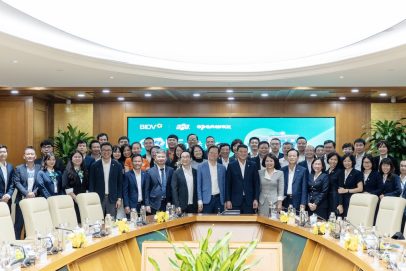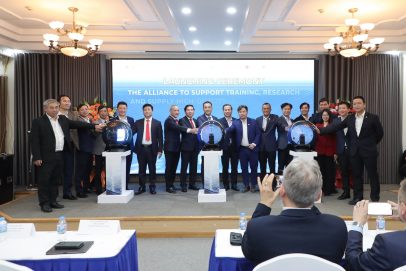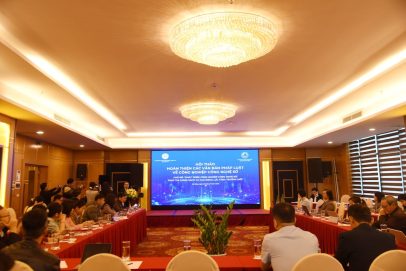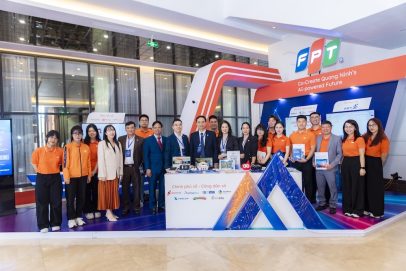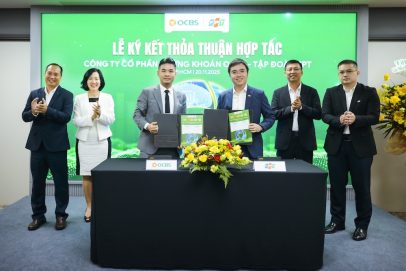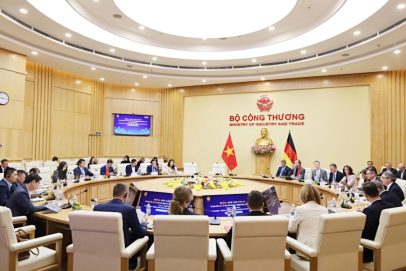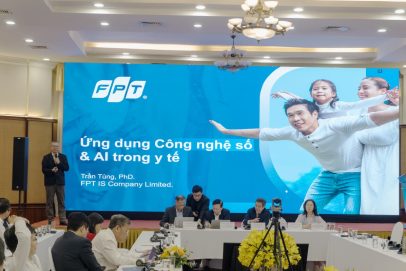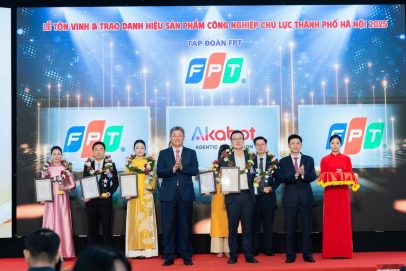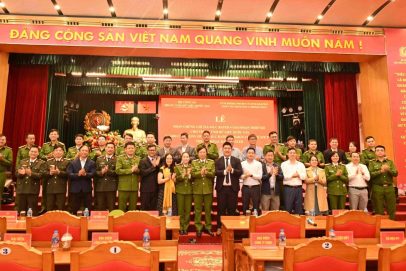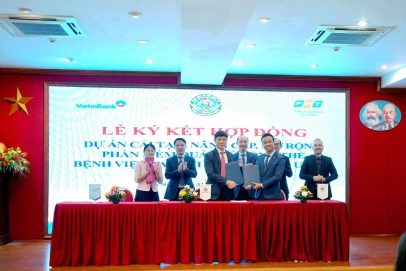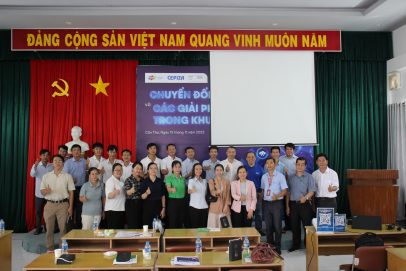FPT expert: Technology and data are tickets to green transformation
According to Mr. Tran Duc Tri Quang, FPT IS’s Chief Data Officer, technology and data will act as the “backbone” of businesses’ green transformation and their “tickets” to green capital from financial institutions.
PwC’s Vietnam ESG (Environment, Social, and Governance) Readiness Report showed that 60% of businesses surveyed said they lack necessary knowledge in ESG practices, posing an urgent need to heighten their awareness of ESG matters. Over half (56%) said they are in the planning phase for the next 2-4 years, or have not planned to make ESG commitments yet.
Mr. Tran Duc Tri Quang, FPT IS’s Chief Data Officer, emphasized that green transformation starts with businesses’ digital transformation, followed by profound understanding and mastering of ESG standards, then devising strategies for sustainable development accordingly.
 |
|
Mr. Tran Duc Tri Quang – FPT IS’s Chief Data Officer. |
– Why have experts recently stressed that ESG (Environment, Social, and Governance) practices will be an inevitable trend for businesses, sir?
Mr. Tran Duc Tri Quang: First, it comes from the need for business loans. Disbursement from banks and financial institutions today rests on ESG standards.
ESG made its global appearance about 20 years ago. In Vietnam, while some domestic corporations and businesses have adopted ESG practices since the early days, they only account for a small fraction of the total number of Vietnamese companies.
The Vietnamese Government made its commitment to reducing emissions by 15.8% by 2030 with domestic resources at the UN Climate Change Conference COP26. This goal requires the involvement of all Vietnamese ministries, departments, and branches as well as the participation of the business sector,
especially with the EU’s Carbon Border Adjustment Mechanism (CBAM) entering into application in its pilot period in October 2023. Accordingly, CBAM will aim to impose a carbon tax on all goods imported into EU markets.
Vietnamese products in four sectors, including iron and steel, aluminum, cement, and fertilizer, exported to the EU will be covered in the scope of this mechanism. This is said to be a significant challenge for Vietnam’s steelmakers when the country’s average greenhouse gas emission rate is about 23% higher than the world average.
In addition, the pressure to disburse funding for green transformation projects and businesses from developed to developing countries also promotes this trend.
ESG reports disclose which companies are doing well in green transformation. As a result, adaption of ESG practices is a “ticket to green capital”, a source of funding and sponsorship with numerous incentives for businesses.
– In your opinion, where should businesses start to obtain this “ticket”?
Mr. Tran Duc Tri Quang: To get started, businesses can look at and learn from domestic or international companies in their industry, such as what standards these companies’ reports follow (TCFD, CDP, or SBT), if they achieve ISO 14064 certification, etc.
We need to clearly distinguish two concepts: ESG reporting and ESG practices. ESG reporting measures performance across four key areas in a company: people, environment, social, and governance. It enable businesses to better understand the criteria used to assess their level of ESG maturity, analyze their current state and goals, and work on a roadmap for ESG practices.
Practicing ESG is not an easy task. For E factor, businesses are required to make the transition from traditional to greener activities through technology investment and business process changes, while G factor necessitates gender balance on the board of directors…
 |
– What roles do technology and data play in this process?
Mr. Tran Duc Tri Quang: Technology and data will act as the “backbone” in businesses’ ESG reporting process, simultaneously solving the two most important problems: statistics and strategies for future improvement.
Data is a prerequisite for producing specific statistics on factors such as people, social, governance and especially environment in companies. It helps limit statistics that are general and lack transparency.
Besides, the application of technology and data also protects businesses from false statistics. For instance, an emission item may be counted twice, causing the inventory results to be incorrect. Additionally, companies are required to publish their emission information based on units of export/import goods instead of on a yearly basis. Fulfillment of emissions reporting requirements will be challenging if all calculations are performed without support from information systems.
Next is mapping out strategies to limit carbon footprint. Vietnam’s goal is to cut emissions by 15.8% by 2030 with domestic resources, which is equivalent to a reduction of about 2% per year per company. However, areas and stages that apply this 2% decrease will vary in each company.
The use of simulation models input by statistical data enables businesses to preview different emission reduction scenarios and watch how they change when their factors are adjusted. This is especially useful for businesses in the energy industry, or those that consume a large amount of energy.
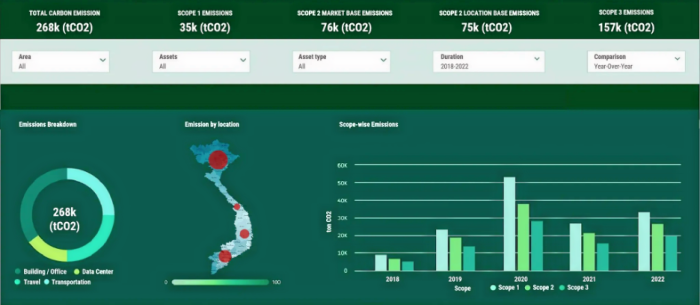 |
|
Emissions statistics dashboard of a domestic enterprise using FPT IS solutions. |
– Specifically, how will simulation scenarios be constructed?
Mr. Tran Duc Tri Quang: Let’s take the example of the Japanese Government. Their energy tax is levied on electricity generation, specifically on the level of greenhouse gas emissions.
Coal-based power generation used to be cheap since it requires little investment and low operating costs. However, electricity production by burning coal emits a large amount of greenhouse gases and is now heavily taxed. Companies in this industry may suffer losses due to high taxes, and are under pressure to change their business plans.
Meanwhile, wind and solar power are not taxed by the Japanese Government because of their net zero emissions. Companies in the energy sector are encouraged to seek for preferential investment capital sources for transformation.
The above mentioned policies force energy companies in Japan to review and find ways to balance their costs and profits. Transformation, however, cannot happen overnight. So how will they manage?
The answer is to create scenarios. For example, define the amount of coal to be reduced and percentage of wind and solar power to be employed to ensure profit and return on new invested capital.
Technology and data will aid in the creation of simulated business plans and scenarios, empowering companies to make the most optimal transformation decisions.
– From your perspective, what challenges are companies likely to encounter when transitioning from traditional to green business models?
Mr. Tran Duc Tri Quang: “Go green” is a challenging task which requires extensive changes in core technology, operating processes, and supply chain partners.
Let’s take the steel industry for example. Coal, a widely used fossil fuel for steel production, can now be replaced with hydrogen gas. Emissions from the production process can be recovered and buried underground instead of being released into the atmosphere.
Waste generated from livestock industries can be collected and burned to turn methane into carbon dioxide. Gases produced during waste processing are also recovered.
For the farming industry, new technologies and farming processes can be utilized to lower water and fertilizer consumption and enable the use of alternative pesticides for pollution mitigation without an impact on productivity…
The application of information technology in business operations management plays an essential part in the “Go green” journey. It provides company leaders with the current state of emissions, possible scenarios, and the current status of the effectiveness of emissions mitigation programs.
Thanks to our ample experience in information technology and data, along with the cooperation of partners with in-depth technical knowledge, we will act as a consultant to businesses and provide professional advice and guidance on data statistics preparation and ESG reporting.
– Let’s dig into ESG reporting. For a business with various sources of daily emissions, how will the emissions be calculated?
Mr. Tran Duc Tri Quang: International standards have been set up for accounting and reporting sources of greenhouse gas emissions. Most of them are widely-used protocols with detailed established emission factors, such as IPCC, GHG Protocol, etc.
The actual carbon footprint of a company is calculated by multiplying the measured consumption data by emission factors specified in Decision 2626/QĐ-BTNMT 2022 on Emission Factors for Greenhouse Gas Inventory.
For multi-industry corporations, each of their sectors has its own specific emission factors established. To obtain the most accurate statistics, businesses will find themselves under pressure to be transparent about their data.
 |
|
FPT IS experts stressed that the first step of going green is digital transformation in businesses. |
– How long does it normally take for a business to complete an ESG report?
Mr. Tran Duc Tri Quang: This depends on the company’s data readiness level. With digital transformation tools and core data systems in place, ESG report compilation will be a timesaving process.
On the contrary, manual operations and management with data scatteredly stored in separate files will heighten the need for a consistent and reliable database, which can be obtained by integrating the ERP system.
One thing that should be emphasized is that, for a strong ESG report, businesses need to conduct a greenhouse gas inventory, which requires interlinking of data within the businesses, as well as quantification and partitioning of emission sources in the clearest way.
The clearer the information system is, the more transparent and detailed emissions statistics businesses will have. Without such system, emission accounting will be a big challenge.
– As you said, ESG reporting is closely linked to the level of data readiness in businesses. So at what scale will businesses need ESG reporting?
Mr. Tran Duc Tri Quang: The need for ESG reporting varies depending on the level of exposure to demanding business environments. However, a greenhouse gas inventory will be an absolute necessity since it involves supply chains.
Leading public enterprises in the industries will take the lead in preparation of ESG reports which cover all indirect emissions occurring in their supply chain (also known as Scope 3).
The supply chain, as you may know, consists of various lower-tier suppliers. Even though it’s not required, these suppliers are under pressure to conduct emissions inventory. The reason for it is that upper-tier suppliers will be forced to “estimate” emissions in the absence of their lower-tier suppliers’ inventory data.
“Estimate” is an excellent word choice. It could increase the taxes suffered by first-tier suppliers in the future, reduce their profits, and consequently cause lower-tier suppliers that fail to carry out emissions inventory to be excluded from the supply chains.
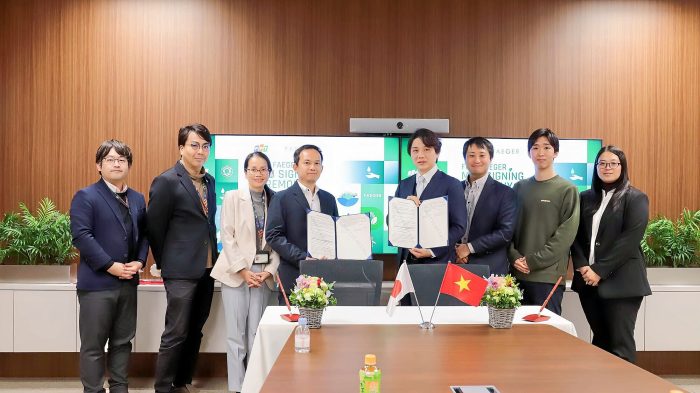 |
– In your opinion, supply chains or businesses in which industries in Vietnam will be at the forefront of the current green transformation trend?
Mr. Tran Duc Tri Quang: Sectors that are currently affected by export market policies such as steel, aluminum, fertilizer, electricity, etc. will take the lead, then logistics, agriculture, forestry, fishing and seafood in the near future.
We currently offer two strategic products that best suit business and market needs: greenhouse gas inventory solutions and ESG reporting tools. Our delivery aims to help organizations and businesses effectively conduct greenhouse gas emissions inventories, develop strategies to minimize potentially annual carbon tax (which can be up to hundreds of billions of VND), and boost revenue by meeting customers’ surging demand for green suppliers and products. Moreover, green businesses will be exposed to new sources of capital – green bonds, which aid in the reduction of their cost of capital.
In addition, we are also building an active network and collaboration with a community of experts from research institutes around the world, including Australia, Japan, the United States,… to share experiences and practical lessons on green transformation with organizations and businesses.
Our goal in 2024 is to become a trusted partner of businesses on their “Go green” journey and help them adapt to regulations of the international markets.
Thank you Sir!
| As a partner on the Vietnamese government’s and businesses’ roadmap to reach the Net Zero goal by 2050, FPT IS (a subsidiary of FPT Corporation) is putting enormous effort and investment in research and collaboration with leading industry experts and advisors on green transformation solutions for businesses. We are focusing on the development of two strategic solutions: Greenhouse gas inventory (VertZéro) and ESG reporting. Our products are tailored to comprehensively digitize the process of collecting environmental data, calculating, managing, and creating emissions reports, monitoring the progress of commitment implementation, and ensuring compliance with international standards.
Information about the greenhouse gas inventory solution VertZéro is available at https://fpt-is.com/vertzero/ |


